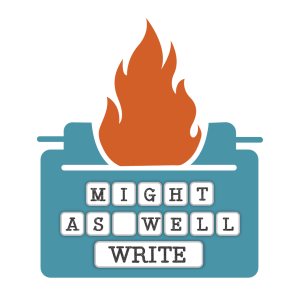Quoth Meatbag, “Hello! I like discourse about writing, but I am getting discouraged of late. A brilliant program called ChatCPT seems capable of writing at least as well as a human, perhaps better. Whereas once I competed solely against my fellow humans for limited audience attention, now I must contend with a far superior artificial intelligence. What should I do to maintain my creative practice?”
Well, Meatbag, I have some unfortunate news: you’re already competing against soulless automatons desperately smashing together pop culture references for an audience of slavering idiots.
They’re called other writers.
Our culture factories have essentially cracked the code of evoking audience emotional responses, hoping to eliminate risk from the creation equation. We have it down to a science: the most pleasing structures of a story, the right colors and audio cues to trigger certain feelings, the perfect images and typefaces to represent whimsy or drama or adventure.
If your goal is solely pushing a reader’s buttons along a predictable pattern or crossing a finish line of basic competence, you could have been replaced by an A.I. long ago.

Your only hope, now and always? To do what marketing departments and A.I. programs can’t: get weird and personal.
When I taught undergraduates, the rarest quality in their work was idiosyncrasy, the peculiar details and complex feelings that come from colliding the personal with the universal.
I wanted to hear about the smudged mannequin they found under their grandpa’s bed when he died. I wanted to read about the time Dad got arrested because he looked exactly like a fugitive. I wanted glass eyes lost in the couch cushions and dogs with improvised fake legs.
Weird is normal and normal is cliche.
A.I. can deliver either well-structured normalcy or random oddness, but it can’t combine the two for any emotional meaning to the work. It can generate a book cover with a torso floating on a sea of lava, but it can’t establish why that’s heartbreaking or scary or funny or wondrous.
What artificial intelligences and hack writers have in common is a shrugging acquiescence that even they don’t understand their work: they had nothing to say but threw it all together in the hopes that the audience would do the heavy lifting of imbuing it with value and meaning.
Sure, it’s possible that the world is okay with getting just a quick calculated jangle of the brainstem before going on to something else.
But that’s junk food, and pressing the same dopamine buttons with a Big Mac or a paint-by-numbers legal thriller will eventually evoke diminishing returns.
There will still be audiences who want more than that, who want to experience and feel something filtered through another consciousness. If that becomes your stock in trade instead of checking a series of boxes, then you may have a chance to reach an audience (and, more importantly, reach deeply within yourself).
That has always been your best chance, your way to rise above everyone else: a consciousness with its own history and symbolic vocabulary that shapes what you love and create.
Play to your strengths. Be human.
